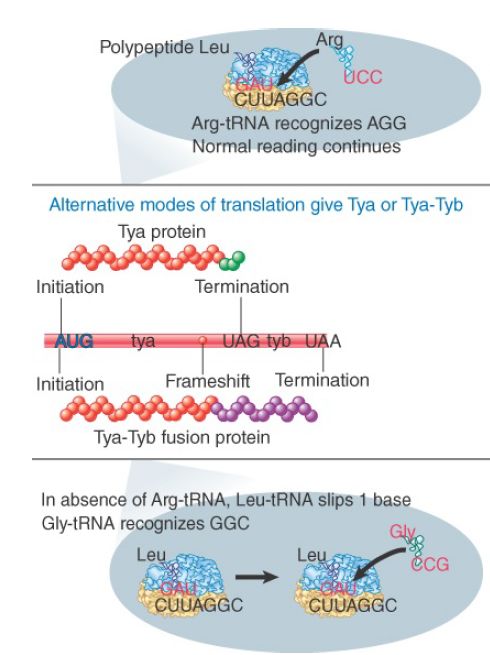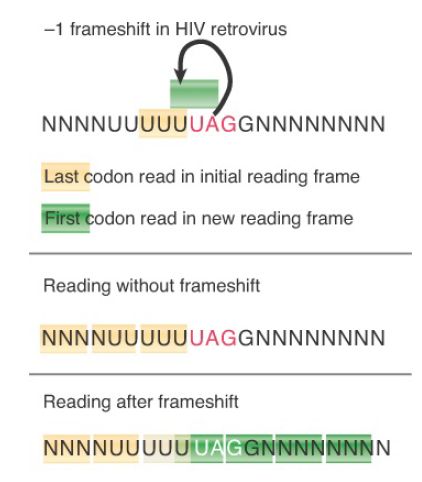

النبات

مواضيع عامة في علم النبات

الجذور - السيقان - الأوراق

النباتات الوعائية واللاوعائية

البذور (مغطاة البذور - عاريات البذور)

الطحالب

النباتات الطبية


الحيوان

مواضيع عامة في علم الحيوان

علم التشريح

التنوع الإحيائي

البايلوجيا الخلوية


الأحياء المجهرية

البكتيريا

الفطريات

الطفيليات

الفايروسات


علم الأمراض

الاورام

الامراض الوراثية

الامراض المناعية

الامراض المدارية

اضطرابات الدورة الدموية

مواضيع عامة في علم الامراض

الحشرات


التقانة الإحيائية

مواضيع عامة في التقانة الإحيائية


التقنية الحيوية المكروبية

التقنية الحيوية والميكروبات

الفعاليات الحيوية

وراثة الاحياء المجهرية

تصنيف الاحياء المجهرية

الاحياء المجهرية في الطبيعة

أيض الاجهاد

التقنية الحيوية والبيئة

التقنية الحيوية والطب

التقنية الحيوية والزراعة

التقنية الحيوية والصناعة

التقنية الحيوية والطاقة

البحار والطحالب الصغيرة

عزل البروتين

هندسة الجينات


التقنية الحياتية النانوية

مفاهيم التقنية الحيوية النانوية

التراكيب النانوية والمجاهر المستخدمة في رؤيتها

تصنيع وتخليق المواد النانوية

تطبيقات التقنية النانوية والحيوية النانوية

الرقائق والمتحسسات الحيوية

المصفوفات المجهرية وحاسوب الدنا

اللقاحات

البيئة والتلوث


علم الأجنة

اعضاء التكاثر وتشكل الاعراس

الاخصاب

التشطر

العصيبة وتشكل الجسيدات

تشكل اللواحق الجنينية

تكون المعيدة وظهور الطبقات الجنينية

مقدمة لعلم الاجنة


الأحياء الجزيئي

مواضيع عامة في الاحياء الجزيئي


علم وظائف الأعضاء


الغدد

مواضيع عامة في الغدد

الغدد الصم و هرموناتها

الجسم تحت السريري

الغدة النخامية

الغدة الكظرية

الغدة التناسلية

الغدة الدرقية والجار الدرقية

الغدة البنكرياسية

الغدة الصنوبرية

مواضيع عامة في علم وظائف الاعضاء

الخلية الحيوانية

الجهاز العصبي

أعضاء الحس

الجهاز العضلي

السوائل الجسمية

الجهاز الدوري والليمف

الجهاز التنفسي

الجهاز الهضمي

الجهاز البولي


المضادات الميكروبية

مواضيع عامة في المضادات الميكروبية

مضادات البكتيريا

مضادات الفطريات

مضادات الطفيليات

مضادات الفايروسات

علم الخلية

الوراثة

الأحياء العامة

المناعة

التحليلات المرضية

الكيمياء الحيوية

مواضيع متنوعة أخرى

الانزيمات
Frameshifting Occurs at Slippery Sequences
المؤلف:
JOCELYN E. KREBS, ELLIOTT S. GOLDSTEIN and STEPHEN T. KILPATRICK
المصدر:
LEWIN’S GENES XII
الجزء والصفحة:
2-6-2021
2047
Frameshifting Occurs at Slippery Sequences
KEY CONCEPTS
- The reading frame may be influenced by the sequence of mRNA and the ribosomal environment.
- Slippery sequences allow a tRNA to shift by one base after it has paired with its anticodon, thereby changing the reading frame.
- Translation of some genes depends upon the regular occurrence of programmed frameshifting.
Recoding events usually involve changes to the meaning of a single codon. Examples include the phenomenon of tRNA suppression and the covalent modification of an aminoacyl-tRNA . However, three other types of recoding cause more global changes in the resulting polypeptide product. These are frameshifting (considered in this section), bypassing, and the use of two mRNAs to synthesize one polypeptide (both are discussed in the next section, Other Recoding Events: Translational Bypassing and the tmRNA Mechanism to Free Stalled Ribosomes).
Frameshifting is associated with specific tRNAs in two circumstances:
- Some mutant tRNA suppressors recognize a “codon” of four bases instead of the usual three bases.
- Certain “slippery” sequences allow a tRNA to move along the mRNA in the A site by one base in either the 5′ or 3′ direction.
Frameshift mutants in a polypeptide result from an aberrant reading of the mRNA codon. Instead of reading a codon triplet, the ribosome reads either a doublet or a quadruplet set of nucleotides. In either case, resumption of triplet reading following this event results in a polypeptide that is out of frame. A frameshift can be suppressed by means of a tRNA that is capable of reading a twoor four-base codon. In the case of four-base codons, the tRNA possesses an expanded anticodon loop consisting of eight nucleotides instead of the normal seven. For example, a G may be inserted in a run of several contiguous G bases. The frameshift
suppressor is a tRNAGly that has an extra base inserted in its anticodon loop, converting the anticodon from the usual triplet sequence CCC← to the quadruplet sequence CCCC← . The suppressor tRNA recognizes a four-base “codon.”
Some frameshift suppressors can recognize more than one fourbase codon. For example, a bacterial tRNALys suppressor can respond to either AAAA or AAAU instead of the usual codon AAA. Another suppressor can read any four-base codon with ACC in the first three positions; the next base is irrelevant. In these cases, the alternative bases that are acceptable in the fourth position of the longer codon are not related by the usual wobble rules. The
suppressor tRNA probably recognizes a three-base codon, but for some other reason—most likely steric hindrance—the adjacent base is blocked. This forces one base to be skipped before the next tRNA can find a codon.
Situations in which frameshifting is a normal event are found in phages and other viruses. Such events may affect the continuation or termination of translation and result from the intrinsic properties of the mRNA.
In retroviruses, translation of the first gene is terminated by a nonsense codon in phase with the reading frame. The second gene lies in a different reading frame and (in some viruses) is translated by a frameshift that changes to the second reading frame and therefore bypasses the termination codon (see FIGURE 1) . The efficiency of the frameshift is low, typically around 5%. The low efficiency is important in the replicative cycle of the virus; an increase in efficiency can be damaging. FIGURE 2 illustrates the similar situation of the yeast Ty element, in which the termination codon of tya must be bypassed by a frameshift in order to read the subsequent tyb gene.

FIGURE 1A tRNA that slips one base in pairing with codon causes a frameshift that can suppress termination. The efficiency is usually about 5%.

FIGURE 2. A +1 frameshift is required for expression of the tyb gene of the yeast Ty element. The shift occurs at a seven-base sequence at which two Leu codon(s) are followed by a scarce Arg codon.
Such situations make the important point that the rare (but predictable) occurrence of “misreading” events can be relied on as a necessary step in natural translation. This is called programmed frameshifting. It occurs at particular sites at frequencies that are 100 to 1,000 times greater than the rate at which errors are made at nonprogrammed sites (about 3 × 10−5 per codon).
This type of frameshifting has two common features:
- A “slippery” sequence allows an aminoacyl-tRNA to pair with its codon and then to move 1+ or −1 base to pair with an overlapping triplet sequence that can also pair with its anticodon.
- The ribosome is delayed at the frameshifting site to allow time for the aminoacyl-tRNA to rearrange its pairing. The cause of the delay can be an adjacent codon that requires a scarce aminoacyl-tRNA, a termination codon that is recognized slowly by its release factor, or a structural impediment in mRNA (e.g., a “pseudoknot,” a particular conformation of RNA) that impedes the ribosome.
Slippery events can involve movement in either direction: A −1 frameshift is caused when the tRNA moves backward, and a +1 frameshift is caused when it moves forward. In either case, the result is to expose an out-of-phase triplet in the A site for the next aminoacyl-tRNA. The frameshifting event occurs before peptide bond formation. In the most common type of case, when it is triggered by a slippery sequence in conjunction with a downstream hairpin in mRNA, the surrounding sequences influence its efficiency. The frameshifting in Figure 2 shows the behavior of a typical slippery sequence. The seven-nucleotide sequence CUUAGGC is usually recognized by tRNA at CUU, followed by tRNA at AGG. However, tRNA is scarce and when its scarcity results in a delay, tRNA slips from the CUU codon to the overlapping UUA triplet. This causes a frameshift because the next triplet in phase with the new pairing (GGC) is read by tRNA . Slippage usually occurs in the P site (when tRNA actually has become peptidyltRNA, carrying the nascent chain).
Frameshifting at a stop codon causes readthrough of the polypeptide. The base on the 3′ side of the stop codon influences the relative frequencies of termination and frameshifting and thus
affects the efficiency of the termination signal. This helps to explain the significance of context on termination.
 الاكثر قراءة في مواضيع عامة في الاحياء الجزيئي
الاكثر قراءة في مواضيع عامة في الاحياء الجزيئي
 اخر الاخبار
اخر الاخبار
اخبار العتبة العباسية المقدسة

الآخبار الصحية















 قسم الشؤون الفكرية يصدر كتاباً يوثق تاريخ السدانة في العتبة العباسية المقدسة
قسم الشؤون الفكرية يصدر كتاباً يوثق تاريخ السدانة في العتبة العباسية المقدسة "المهمة".. إصدار قصصي يوثّق القصص الفائزة في مسابقة فتوى الدفاع المقدسة للقصة القصيرة
"المهمة".. إصدار قصصي يوثّق القصص الفائزة في مسابقة فتوى الدفاع المقدسة للقصة القصيرة (نوافذ).. إصدار أدبي يوثق القصص الفائزة في مسابقة الإمام العسكري (عليه السلام)
(نوافذ).. إصدار أدبي يوثق القصص الفائزة في مسابقة الإمام العسكري (عليه السلام)


















